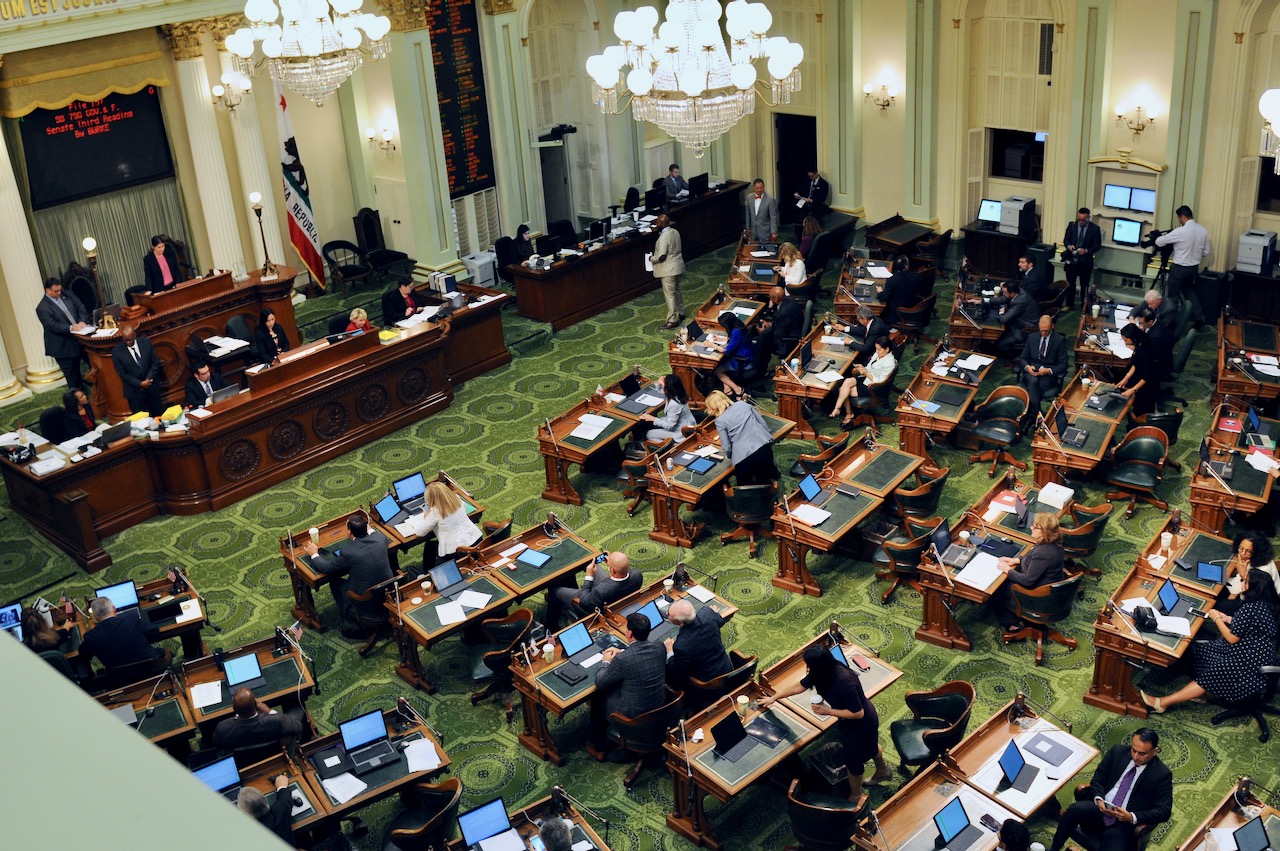
California State Capitol. (Photo: Kevin Sanders for California Globe)
California’s Fair Packaging and Labeling Act
No food containers are to be made, formed, or filled as to be misleading
By Chris Micheli, June 24, 2022 5:11 pm
California has a number of formal acts in statute. The Fair Packaging and Labeling Act is contained in Business and Professions Code Division 5 (Weights and Measures), Chapter 6, which includes Section 12601 to 12615.5. Chapter 6 was added by Chapter 1309 in 1969.
Section 12601 provides that Chapter 6 is designed to protect purchasers of any commodity within its provisions against deception or misrepresentation. Packages and their labels should enable consumers to obtain accurate information as to the quantity of the contents and should facilitate value comparisons. In addition, “it is hereby declared to be the policy of the Legislature to assist in attaining these goals.”
Section 12602 makes it unlawful for any person engaged in the packaging or labeling of any commodity for distribution or sale, or for any person (other than a common carrier for hire, a contract carrier for hire, or a freight forwarder for hire) engaged in the distribution of any packaged or labeled commodity, to distribute or to cause to be distributed any such commodity if the commodity is contained in a package, or if there is affixed to that commodity a label, which does not conform to the provisions of this chapter or the regulations adopted under the authority of this chapter.
In addition, the above prohibitions do not apply to persons engaged in business as wholesale or retail distributors of commodities, with specified exceptions.
Section 12603 provides that no person subject to the prohibitions above are allowed to distribute any packaged commodity unless it is in conformity with regulations that must be established by the secretary. These regulations must fulfill specified conditions.
Section 12605 provides that no person subject to the prohibitions above are allowed to distribute or cause to be distributed in commerce any packaged commodity if any qualifying words or phrases appear in conjunction with the separate statement of the net quantity of contents required.
In addition, there cannot be any declaration of quantity being qualified by the addition of the words “minimum,” or “when packed,” or words of similar import; nor cam there be any unit of weight, measure or count be qualified by any term (such as jumbo, giant, full, or the like) that tends to exaggerate the amount of the commodity in the package.
Section 12606 provides that no container wherein commodities are packed may have a false bottom, false sidewalls, false lid or covering, or be otherwise so constructed or filled, wholly or partially, as to facilitate the perpetration of deception or fraud. In addition, no container is allowed to be made, formed, or filled as to be misleading.
Furthermore, a container that does not allow the consumer to fully view its contents must be considered to be filled as to be misleading if it contains nonfunctional slack fill. Nonfunctional slack fill is allowed in specified conditions. Any sealer may seize a container that facilitates the perpetration of deception or fraud and the contents of the container.
Section 12606.2 provides that this section applies to food containers subject to the Federal Food, Drug, and Cosmetic Act. No food containers are to be made, formed, or filled as to be misleading. A container that does not allow the consumer to fully view its contents must be considered to be filled as to be misleading if it contains nonfunctional slack fill. Slack fill is the difference between the actual capacity of a container and the volume of product contained therein. Nonfunctional slack fill is the empty space in a package that is filled to substantially less than its capacity for reasons other than specified ones.
In addition, if the requirements of this section do not impose the same requirements as are imposed by the Federal Food, Drug, and Cosmetic Act, then this section is not operative to the extent that it is not identical to the federal requirements. Any sealer may seize any container that is in violation of this section and the contents of the container.
Section 12607 provides that, whenever a packaged commodity is offered for sale, exposed for sale or sold without a statement of net quantity appearing thereon as required by this chapter, the sealer must in writing order the commodity off sale and require that a correct statement of net quantity be placed on the commodity before the same may be released by the sealer.
Section 12609 provides that the secretary must adopt necessary regulations to carry out the purpose of this division and for the testing of packages to verify the net quantity statements.
Section 12610 provides that the secretary may promulgate regulations similar to those promulgated by the United States Secretary of Health and Human Services or the Federal Trade Commission pursuant to the federal Fair Packaging and Labeling Act in order to do specified purposes.
Section 12611 provides that it is unlawful to pack, ship, or sell any commodity in a container which does not conform to all the specifications of this chapter; or which is not conspicuously marked, branded, or otherwise labeled as required by this chapter; or on which any word, statement or other information required by this chapter is not prominently placed, in such terms and with such conspicuousness, as compared with other words, statements, designs or devices on the label or container, as to render it likely to be read and understood by ordinary persons under customary conditions of purchase and use.
Section 12612 provides that the sale of any commodity packaged in a container, wherein both the container and the contents thereof comply with any act of Congress or rules or regulations promulgated thereunder.
Section 12613 provides that, if any provision of this chapter is less stringent or requires information different from any requirement of the “Fair Packaging and Labeling Act,” the provision is inoperative to the extent that it is less stringent or requires information different from the federal requirement, in which event the federal requirement is a part of this chapter.
Section 12615.5 provides that the violation of any provision of this chapter is a misdemeanor punishable by a fine of not less than $25 nor more than $500) or by imprisonment in the county jail for a term not to exceed six months, or by both such fine and imprisonment.
- Frequently Asked Questions on California Legislature Conducting Its Work - April 20, 2024
- What Information Has to Be on the LegInfo Website? - April 19, 2024
- New Assembly Bill Would Ban NDAs in Legislative Negotiations - April 19, 2024





One thought on “California’s Fair Packaging and Labeling Act”